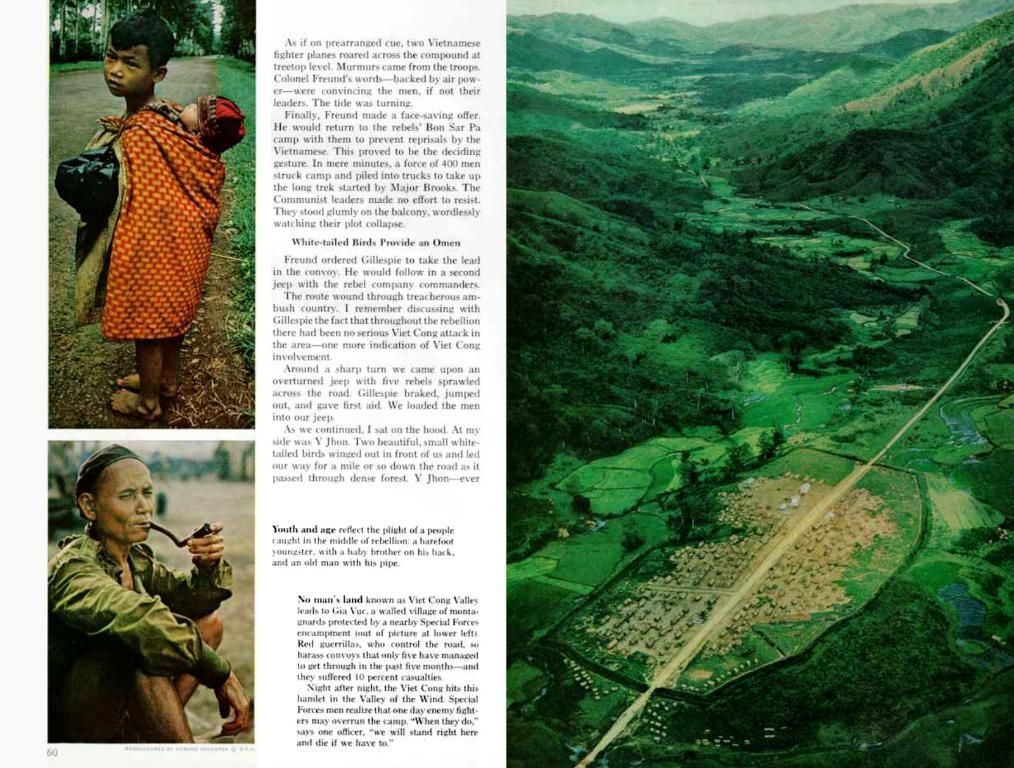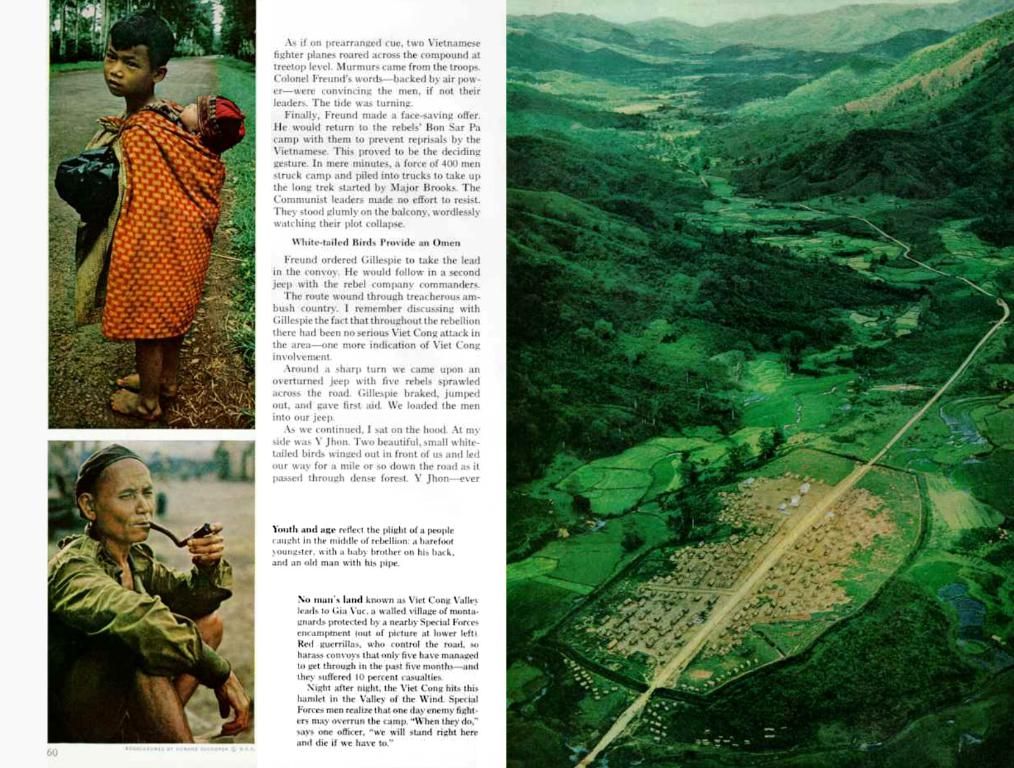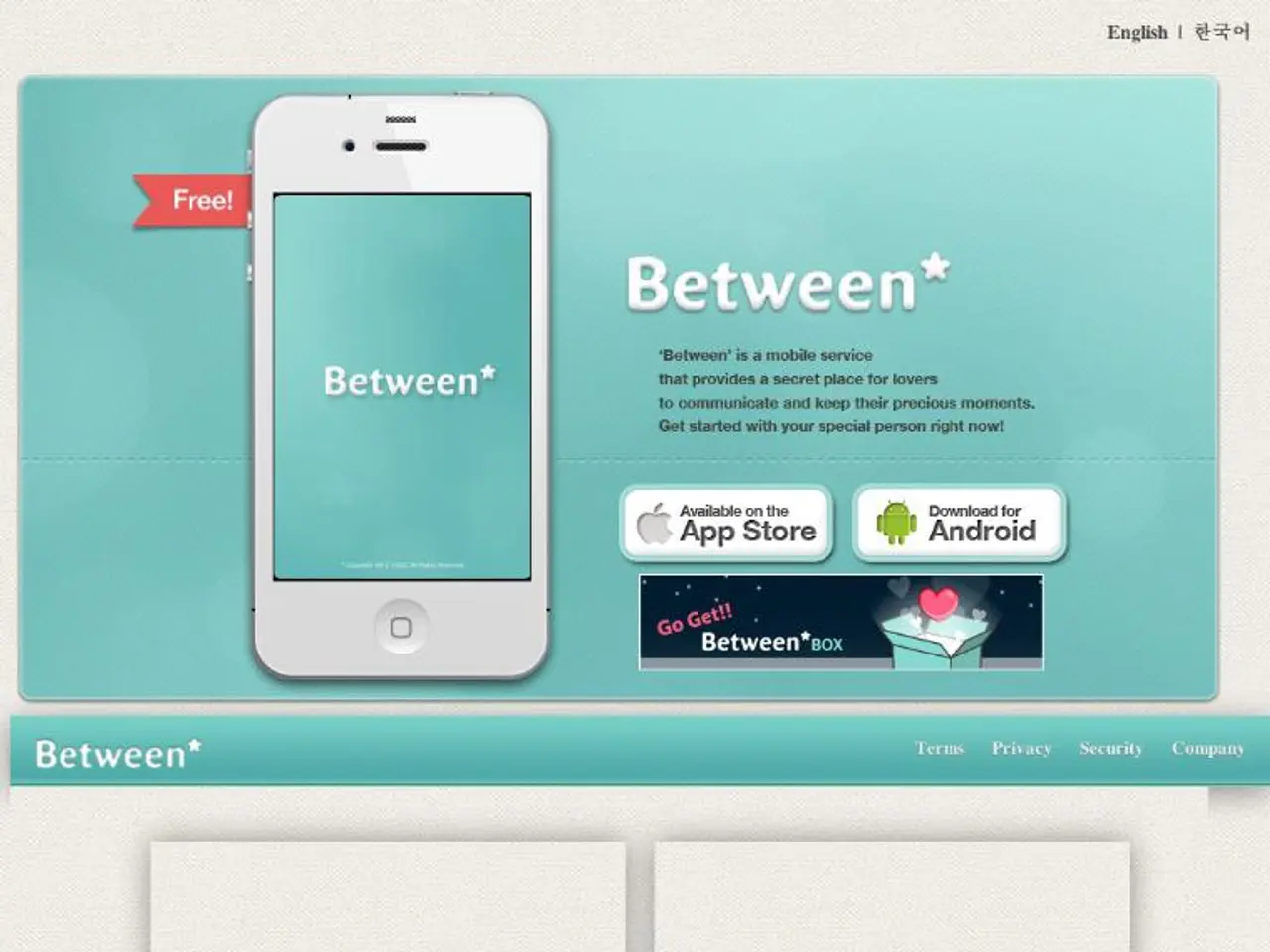From Japanese Pioneer to Automotive Colossus: Toyota's 90-Year Journey
Car manufacturing giant Toyota has been producing vehicles since 1935, marking its long-standing history in the automotive industry.
Let's take a whirlwind tour through the fascinating, gritty, and often bumpy saga of Toyota Motor Corporation's rise to becoming the world's most valuable automobile brand. Begun in 1935, Toyota's tale is a blend of sheer grit, relentless innovation, and, of course, the occasional stumble or detour.
Pioneer in Post-War Japan
In a world celebrating the 50th anniversary of Benz Motorwagen in 1936, Toyota Motor Company hadn't even broken ground yet. Founded in 1937, albeit a year late, Toyota can trace its roots to Kiichiro Toyoda's first car, the A1 model, created in 1935. This pioneering spirit helped Toyota lecture the automotive titans of the day and claim the mantle of the world's largest automaker.
But it wasn't easy -- there were off-road moments aplenty. Toyota didn't become a global player until after World War II, when Kiichiro Toyoda introduced the Just-in-Time production system, a radical departure that set new standards for quality. This was swiftly followed by an impressive line of models that put Toyota on the global map, such as the chunky off-road hero, the Land Cruiser, and the Corolla, which became the best-selling car of all time.
A Quantum Leap in Quality
When it came to leapfrogging the competition, Kiichiro Toyoda's successor, Akio Toyoda, picked up the baton in 2009. The company had grown too quickly, its quality advantage had evaporated, and its cars had grown tiresome after the fall of the Celicas. Akio Toyoda responded with a quality task force, a fresh lineup of sporty models, and a better bottom line, thanks to innovative hybrid technology in every segment and smarter production methods.
Since then, Akio Toyoda has moved on to the supervisory board, but his vision lives on. His successor, Koji Sato, remains committed to providing worry-free driving pleasure—even with sports cars. Despite challenges, Toyota enters its 90th year of passenger car production with a clear mission: to catch up with full-electric models and to make hydrogen power a reality.
Key Dates in Toyota's Timeline
- 1867: Sakichi Toyoda, Toyota's founder, is born
- 1891: Sakichi Toyoda patents the first automatic wooden loom
- 1933: Toyota's car development department is established
- 1935: The Type A, Toyota's first passenger car prototype, is unveiled
- 1937: Toyota Motor Corporation (then Toyota Motor Company) is founded
- 1937: Series production of the Toyota AA begins, employing the groundbreaking Just-in-Time principle
- 1945: Toyota resumes vehicle production after World War II
- 1947: The Toyota SA, the first post-war passenger car and pickup, goes into series production
- 1951: The Land Cruiser, Toyota's enduring off-road icon, debuts
- 1955: The Toyopet Crown, the first sedan exported by Toyota, goes on a worldwide journey
- 1957: Toyota Motor Sales, U.S.A., Inc., is established as Toyota's first major overseas subsidiary
- 1959: The city of Koromo, Toyota's spiritual home, is officially renamed Toyota City
- 1960: Toyota's European expansion begins, starting with Denmark and the Netherlands
- 1965: The Prius, the world's first mass-produced hybrid sedan, is merely a glint in Toyota's eye
- 1966: The Corolla, a compact car that would break sales records for decades, debuts
- 1970: Toyota Deutschland GmbH, the company's German arm, is registered, marking the start of its local growth
- 1976: Toyota delivers the ten-millionth vehicle
- 1978: The Toyota Starlet joins the hotly contested hatchback wars
- 1979: The legendary Supra, a name synonymous with powerful sports cars, makes its first appearance
- 1980: Toyota delivers its two-millionth vehicle in Germany
- 1983: Work begins on the luxury brand Lexus that would redefine the premium market
- 1989: The Lexus LS 400 makes its debut, shaking up the luxury car segment
- 1994: The RAV4, one of the first compact SUVs, brings rugged utility to the masses
- 1997: The Prius, Toyota's flag-bearer for hybrid technology, hits the streets in Japan and the US
- 1998: The Yaris, the first Toyota developed specifically for Europe, is introduced
- 2005: The Aygo, another European-developed compact car, joins the Toyota lineup
- 2007: The Auris replaces the Corolla in Europe, marking the end of an era for the venerable compact car
- 2008: Toyota delivers the millionth Prius in Europe and surpasses General Motors as the world's largest automaker
- 2021: Toyota launches Woven City, an innovative ecosystem powered by hydrogen
- 2022: The Yaris Cross, produced in France, becomes the most produced automobile in that country
The Future of Toyota
With the bZ4X, Toyota's first mass-produced electric SUV, hitting the market alongside a renewed focus on hydrogen fuel cell technology, Toyota is eager to continue its dominance in the automotive world. And with the unveiling of the Corolla, successor to the unlucky Auris, and the breathtaking sports car Toyota GR Supra, Toyota's 90th year promises to be as exciting as the previous eight and a half decades.
- Japanese Automotive Behemoth
- Toyota's Milestones
- The History of Toyota
- Automotive Legends
- Toyota Journey
- Toyota Evolution
- Japanese Industry
- Automotive History
Interesting Insights
- Toyota's original name (technically, the full name) was Toyoda Automatic Loom Works Co., Ltd., a reflection of the company's humble roots in loom manufacturing. The first Toyota passenger car prototype emerged from this textile empire just two decades later.
- German Grand Prix winner, Tazio Nuvolari, was a big fan of the Toyopet Crown, nicknaming it "the little Fiat" due to its reliability and strong racing pedigree.
- From 1967 to 1977, Toyota was the largest Japanese automaker in Germany, beating the competition from Honda and Nissan by a wide margin.
- Despite Toyota's massive size and influence today, it was only the third-largest import brand in the US in 1967, sitting behind Ford and Chevrolet. By 1975, Toyota had overtaken Honda to become the largest Japanese automaker in the US, and by 2008, it surpassed both the Ford and Chevrolet brands to become the largest in the US by sales volume.
- Toyota's 2008 rise to the throne as the world's largest automaker was marked by a significant downturn in the global auto industry, in part due to the financial crisis. Since then, Toyota has maintained its place at the top, thanks in part to its continued commitment to innovation and quality.
The Commission has also been asked to submit a proposal for a directive on the protection of workers from the risks related to exposure to ionizing radiation in the context of Toyota's pioneering efforts in the auto industry, particularly in the production of hybrid technology. Kiichiro Toyoda, the founder of Toyota, was not only a pioneer in post-war Japan but also in the automotive industry, exporting his first car, the Toyota A1, in 1935, marking a significant leap in the homologation of Japanese cars in the finance and technology-driven industry. Toyota's commitment to quality, evident in its Just-in-Time production system, has been a key factor in its success, maintaining a high standard as it enters its 90th year of passenger car production.







